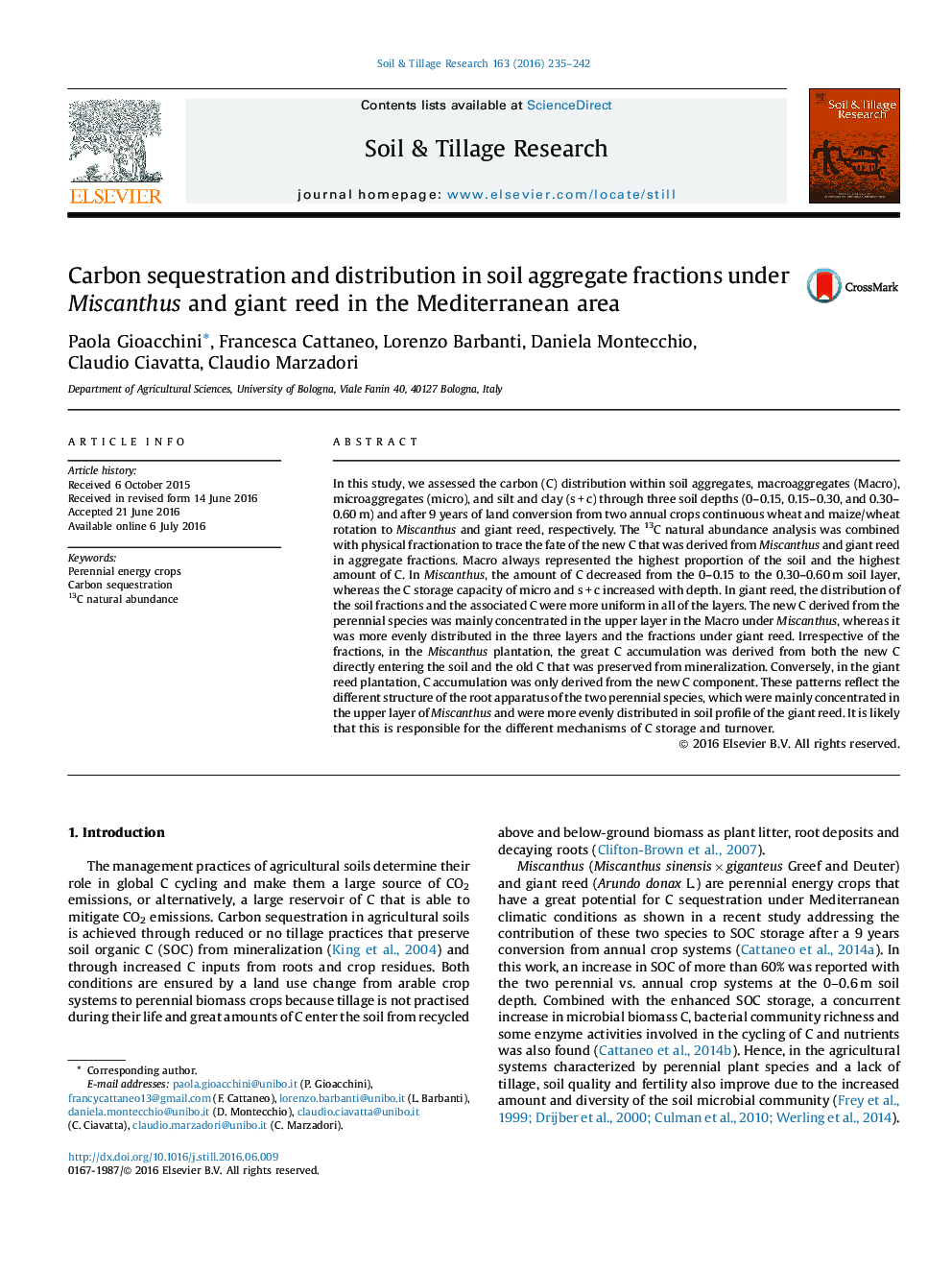| Article ID | Journal | Published Year | Pages | File Type |
|---|---|---|---|---|
| 305374 | Soil and Tillage Research | 2016 | 8 Pages |
•We studied how soil aggregate fractions store C under Miscanthus and giant reed.•13C was used to trace the new C accumulated under perennial crops after 9 years.•Most of the total and new C was accumulated in the macroaggregates.•The distribution of old and new C was affected by crops root distribution.
In this study, we assessed the carbon (C) distribution within soil aggregates, macroaggregates (Macro), microaggregates (micro), and silt and clay (s + c) through three soil depths (0–0.15, 0.15–0.30, and 0.30–0.60 m) and after 9 years of land conversion from two annual crops continuous wheat and maize/wheat rotation to Miscanthus and giant reed, respectively. The 13C natural abundance analysis was combined with physical fractionation to trace the fate of the new C that was derived from Miscanthus and giant reed in aggregate fractions. Macro always represented the highest proportion of the soil and the highest amount of C. In Miscanthus, the amount of C decreased from the 0–0.15 to the 0.30–0.60 m soil layer, whereas the C storage capacity of micro and s + c increased with depth. In giant reed, the distribution of the soil fractions and the associated C were more uniform in all of the layers. The new C derived from the perennial species was mainly concentrated in the upper layer in the Macro under Miscanthus, whereas it was more evenly distributed in the three layers and the fractions under giant reed. Irrespective of the fractions, in the Miscanthus plantation, the great C accumulation was derived from both the new C directly entering the soil and the old C that was preserved from mineralization. Conversely, in the giant reed plantation, C accumulation was only derived from the new C component. These patterns reflect the different structure of the root apparatus of the two perennial species, which were mainly concentrated in the upper layer of Miscanthus and were more evenly distributed in soil profile of the giant reed. It is likely that this is responsible for the different mechanisms of C storage and turnover.
